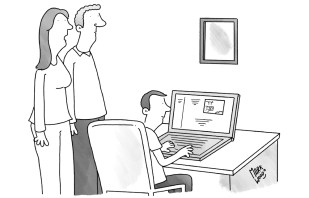
The aim of this book is straightforward enough: a study of the Tiger Slam, the incredible 2000-01 season when Tiger Woods held the Masters, the US Open, the Open and the PGA championship all at the same time.
It’s the Tiger Slam rather than the Grand Slam because purists will argue that technically (purists always argue ‘technically’) Woods did not win all four trophies in the same year: he took the British and US Opens and the PGA in 2000 and added the Masters in April 2001. Whatever. The fact remains that Woods is the only player ever to hold all four titles simultaneously. Given how transient form on the golf course is, he is likely to be the only one who will ever do so. Whatever we choose to call it, it is a truth universally acknowledged that Woods’s run from the summer of 2000 into the spring of 2001 constitutes a phase with very few parallels in sport. It is a subject worthy of a truly deep dive. For reasons we’ll come to, this book isn’t quite it.
There’s still much for the Tiger fiend to enjoy. Brody Miller wonderfully recreates moments like the 3-wood Woods blasted 20 yards past Phil Mickelson’s driver on the 13th at Augusta on his way to winning the 2001 Masters, a shot he had been practising for months. (Mickelson asks Woods if he always hits his 3-wood that far. ‘No, further,’ Tiger replies. Ouch.) Or the exchange between Woods and his caddie Steve Williams on the 14th fairway at St Andrews in 2000, when Woods was facing a blind shot into high wind and Williams urged him to hit the ball on the line of a specific cathedral spire in the distance. ‘Is that the one you’re talking about?’ Woods says dryly, twirling his club after executing the shot perfectly – one he still regards as the greatest he ever hit in competition.
And so it goes, with Miller alternating between reconstructing the peerless rounds of golf Woods put together back then and recapping what was going on in the man’s life at the same time. It’s here that we run into problems; and they are ones you knew were coming from the moment you encountered this sentence in the introduction: ‘Woods declined to speak to us for The Year of the Tiger.’

Well colour me stunned. Having made the mistake of chatting freely to sports journalists at the beginning of his career, Woods simply stopped talking to writers. He went into sphinx-mode and has remained locked in it ever since. Without recourse to the man himself, Miller can only resort to secondary texts. So you’re very quickly into the realms of stuff you’ve read about many times before. Another rehash of Earl Woods’s deeply unreasonable military-style tutoring techniques, anyone?
The Tiger book industry – and it is exactly that – has now reached a pitch where there is shelf after shelf of the stuff. A pitch where, earlier this year, the not-cash-averse James Patterson (or perhaps some writer who toils at James Patterson Industries) entered the fray with a scissors-and-paste job imaginatively titled Tiger Tiger purporting to be ‘a new biography uncovering the life of golf superstar Tiger Woods. What makes Tiger tick?’
Those who really were there have already told their stories. Step forward Williams (The Caddie’s Tale) and Hank Haney (The Coach’s Tale). Those who were there-adjacent have told theirs, too. (Any number of the sportswriters who Woods spent 15 minutes with early on.) Even Williams now has his own biography. We’re probably not far away from seeing ‘How I Made Tiger’s foot-long Turkey on Wholemeal,’ and then the biography of the sandwich-maker. By James Patterson. (‘It was a blazingly hot August day in the staff room at the Jupiter Island branch of Subway as Marianne F. Jenkins prepared for an eight-hour shift. Little did she know what customer fate would soon be sending her way.’)
Miller does a perfectly decent job of putting you inside the ropes for Woods’s finest hours. But the chapters around this feel padded; and ultimately The Year of the Tiger reads like a Vanity Fair piece fleshed out to book length. Sadly, until Woods himself decides to sit down in front of the computer screen – or Dictaphone – and say ‘Here’s what I was thinking…’, most of the books about him will continue to fail in the same way.







Comments